Editor's note: The following story and photos are by Jessica Ford.
My name is Jessica Ford, and I work for Heifer International as the Communications and Research Officer for Heifer Peru. Heifer has relocated me from the headquarters in Little Rock, where I’m from, to their office in Lima, Peru, for one year as part of a pilot development program. This is the first of two blog posts about a one-day visit to my very first Heifer project in Peru! I had two reasons for visiting the project. The first was to visit some families there that Heifer is working with for the general monitoring and evaluating that comes with all Heifer projects. The other reason was to attend a Passing on the Gift ceremony. Anyone who knows anything about Heifer (and if you don’t, then you will after reading this post) knows that Passing on the Gift (POG for us seasoned Heifers) encompasses the essence of Heifer’s entire approach.
It’s cold. Really, really cold in this corner of the world. The temperature during the warmest part of the day peaks at about 42 degrees or 5.5 degrees Celsius. We were visiting communities near Puno, where elevations reach 13,000 feet - at night, it is well below freezing. And this isn’t the coldest part of the year. I visited, with some Heifer colleagues and a local NGO partner called “Red Social,” the community of Chojna Chojnani – about an hour from Juliaca, in the Puno region of Peru. To the locals, the weather feels just fine. To this US transplant, now residing in the mild, humid conditions of coastal Lima, it’s downright frigid.
Puno is known for touristy stuff. It was pretty crowded there. So I didn’t need to look far for other gringos like me. It seemed like there were way more tourists here than near my home in Lima. And everything seemed to be more expensive – the food, hotels, bottles of water, everything. There were lots of crafts and goods sold in local shops that come from local artisans.
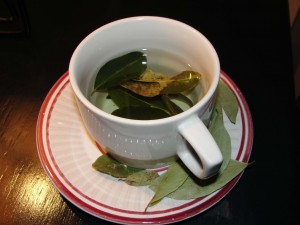
Another adjustment I had to make was to the altitude – Puno is at 3,860 meters (12,420 feet). I was encouraged to take all kinds of different medicines and chew on coca leaves to help with altitude sickness.
I only had a little trouble breathing and had just a slight headache. But, I was clear headed enough to know, though, it was a very important day. The day of my visit was bigger than the weather, worth more than the price of a tourist trek and reached higher than the altitude. That day, we Passed on the Gift.
We arrived at our first community at about 10:30 in the morning. The community of Chojna Chojnani is part of a larger Heifer Project called FEED. At the beginning of this project, families, specifically women, received building materials, training, and other agricultural inputs like vegetable plants and seeds. In Spanish, Pass on the Gift is Compartir de Recursos, and this community was pumped up about passing some stuff on. While the men and women of the community put the final touches on the big celebration, I had the chance to visit a couple of families part of the Heifer project.
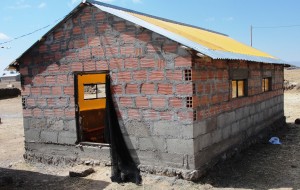
The first folks I visited were Edith and her son, Ramon. Talk about impressive. Both of them blew me away with their technical knowledge and passion. Edith knows her stuff. She received roofing materials and supplies and extensive training for her small plot of land. The roofing materials were especially critical. They allow the sunlight to come through and keep in the warmth. She basically has her own greenhouse for guinea pigs. She and Ramon have been cultivating guinea pigs for over a year, and both are getting very good at it. They had guinea pigs prior to the project, but the animals were kept in their home and were only used randomly for consumption. The training Edith and Ramon received from Heifer taught them more sophisticated methods of breeding and technical animal care so they could rapidly increase their quality production for market and consumption. And, because of the fiercely cold weather, winter can be dangerous for anything that breathes (sadly, it is not uncommon for many infant deaths a year to be attributed to the cold weather). But now, thanks to the Heifer project, through training and building supplies, and Edith and Ramon’s commitment, that isn’t a fear for them anymore.
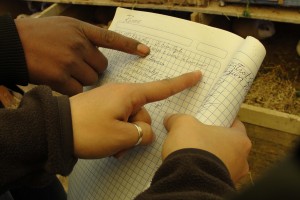
I was particularly impressed with Ramon, who is 13 years old. First of all, I don’t know any 13-year-olds with this level of commitment to anything. But Ramon has taken to raising guinea pigs. When it comes time for Edith and Ramon to show us their animals, he takes over. It has become his passion, and he is so good at it. Ramon calculates birth rates, mating seasons, meat and breed quality standards, how long to keep them isolated, when they’re best to eat, when they’re best to show, you name it. He keeps meticulous records. I never knew so much went into raising guinea pigs.
He has even entered local livestock competitions. He won second place for his prize guinea pig seen here.
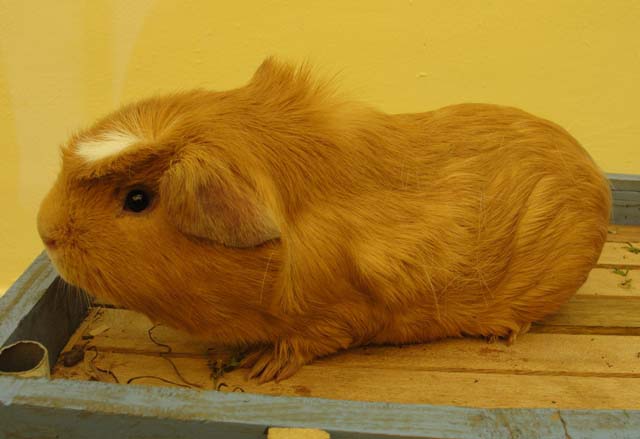
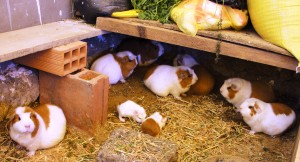
For his prize, he won a special type of fence to expand his pens for this particular breed of guinea pigs. Edith and Ramon use their guinea pigs for consumption (increasing their protein) and to sell at the local markets (increasing their income). Thanks to some very simple inputs from Heifer and with all the training they’ve received, as Ramon’s breeding improves, he can get more and more money for his guinea pigs. Some are sold for meat, others for breeding. He is trying to breed guinea pigs with a calmer temperament – those do better for both... Not an easy task. But Ramon is well on his way.
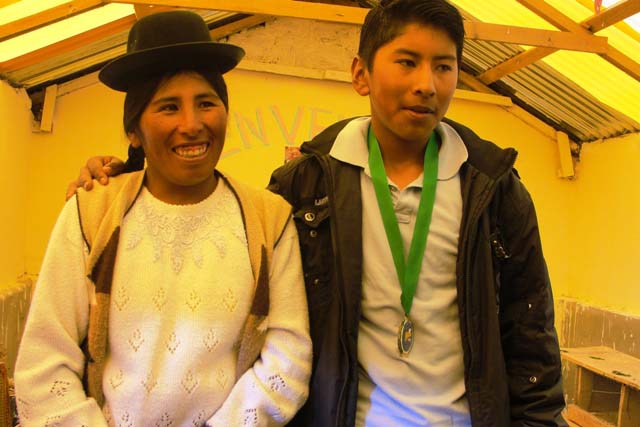
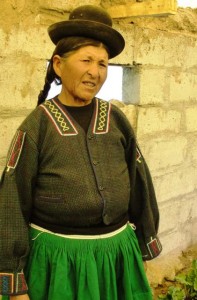
After visiting Edith and Ramon, I visited another family who has guinea pigs and a vegetable garden to display. I met Gregoria (on the left) and her daughter and grandson, Lillian and Lenin. This family also received roofing supplies, training and seeds, but their personal specialty is in organic gardening. In their greenhouse, much like the guinea pig housing that Edith and Ramon built, they grow various vegetables including cilantro, lettuce, beets, radishes, carrots, broccoli and beets. We tried some lettuce right out of the ground, and it was sweet and delicious! Gregoria and her family primarily use the vegetables they raise for consumption. Gregoria is currently sending Lenin to a school in another city. He comes home every two weeks, and she sends him back with loads of vegetables. This allows him to save lots of money on food, and his diet is so much healthier.
However, like many of the families in this community, they still have one big problem: access to water. They have to walk very far and carry heavy loads of water for them to drink and for their vegetables and animals.

They are so proud of their produce. And rightly so. In this cold, dry weather, their vegetables are flourishing. They identified each plant and a sample of seeds for us to identify them. So amazing.
Pretty cool, huh? It really doesn’t take much to transform lives. With Heifer’s help and with just a tiny bit of creative initiative and their own passion, they’re not just feeding themselves day by day, they’re flourishing. This is how you end hunger and poverty.
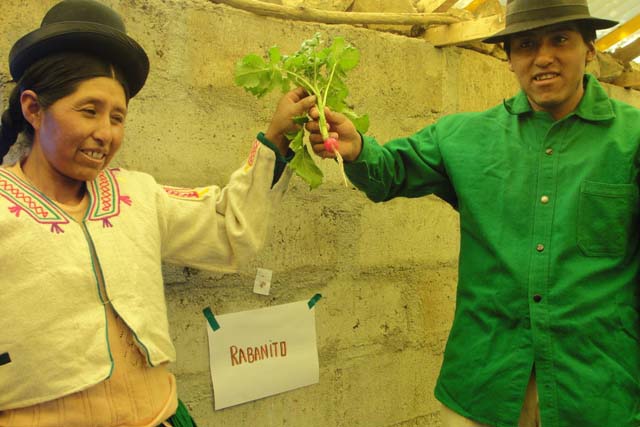
After visiting these two inspiring families, it was time for our crew to head back to the community building to attend the big event of the day, the Passing on the Gift ceremony. Check back tomorrow to read about and see pictures of the POG ceremony.